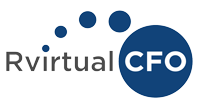One of the most critical decisions freelancers and consultants face is how to price their services. Your rates not only reflect your expertise and value but also determine your earning potential and sustainability. Striking the right balance between charging what you’re worth and staying competitive in the market can be challenging, especially for those new to freelancing.
This guide walks you through the process of setting your rates with confidence, ensuring that your pricing aligns with your skills, goals, and the expectations of your target clients.
Step 1: Understand Your Costs
Before deciding on your pricing, you need a clear understanding of your costs. Unlike traditional employees, freelancers are responsible for covering expenses like taxes, health insurance, and retirement savings. Failing to account for these costs can lead to underpricing, which can leave you struggling to make ends meet.
Here’s what to include when calculating your baseline rate:
- Living Expenses: Rent or mortgage, utilities, groceries, and other personal costs.
- Business Expenses: Software, equipment, marketing, website hosting, and professional development.
- Taxes: Remember to include self-employment taxes, which are typically around 15.3% in the United States.
- Savings: Allocate a portion for retirement, emergencies, and future investments in your business.
Add these costs together, then divide by the number of billable hours or projects you expect to complete each month. This calculation gives you a starting point for your minimum acceptable rate.
Step 2: Research Market Rates
Understanding what others in your field charge is essential for setting competitive rates. Start by researching industry benchmarks for freelancers and consultants in your niche and location. Websites like Glassdoor, LinkedIn, and freelancing platforms can provide valuable insights into typical rates for your skillset.
Consider these factors when comparing rates:
- Experience: New freelancers may charge lower rates initially, while seasoned professionals can command premium pricing.
- Specialization: Niche expertise often justifies higher rates, as it provides clients with specialized value.
- Geography: Rates can vary significantly based on your location and the cost of living in your area.
While market research is important, remember that your rates should reflect your unique value and not simply match competitors.
Step 3: Choose a Pricing Model
Freelancers typically choose between hourly, project-based, or value-based pricing models. Each approach has its pros and cons, so select one that aligns with your work style and client needs.
Hourly Rates
Hourly rates are straightforward and easy for clients to understand. They’re best suited for projects with unclear or evolving scopes. However, this model can limit your earning potential, especially if you work efficiently.
Project-Based Pricing
Charging per project allows you to set a fixed price for a defined scope of work. This model rewards efficiency and can help avoid misunderstandings about time spent. Be sure to outline deliverables clearly to prevent scope creep.
Value-Based Pricing
This model focuses on the value your work provides to the client. For example, if your design helps a client generate significant revenue, you can justify charging more. Value-based pricing requires confidence and a clear understanding of the client’s goals and ROI.
Step 4: Set Clear Boundaries and Policies
Once you’ve decided on a pricing model, it’s essential to establish boundaries to protect your time and ensure fairness. Clearly outline your policies in contracts, including:
- Scope of work and deliverables.
- Revisions and additional fees for changes outside the original agreement.
- Payment terms, including deposits and deadlines.
These details help manage client expectations and prevent disputes over pricing or project scope.
Step 5: When and How to Raise Your Rates
As your skills and experience grow, so should your rates. Signs that it’s time to increase your prices include:
- You’ve gained additional expertise or certifications.
- Your workload consistently exceeds capacity.
- Inflation or rising business costs require an adjustment.
Communicate rate increases to existing clients with plenty of notice, and emphasize the value you provide. For example, highlight any new skills, tools, or results that justify the higher rate. Consider grandfathering loyal clients into your old rates for a limited time as a goodwill gesture.
Step 6: Confidence in Your Worth
Pricing your services isn’t just about numbers—it’s about recognizing your worth and the value you bring to your clients. Confidence in your skills and the ability to articulate that value can make a significant difference in how clients perceive your rates.
Remember, clients aren’t just paying for your time; they’re paying for your expertise, reliability, and the results you deliver. By setting fair and competitive rates, you ensure the sustainability of your freelance business while attracting clients who value your work.
Additional Resources
For more insights into freelancing and financial planning, check out our article onhow to manage your freelance income. You can also explore industry resources like Freelancers Union for community support and tips.

